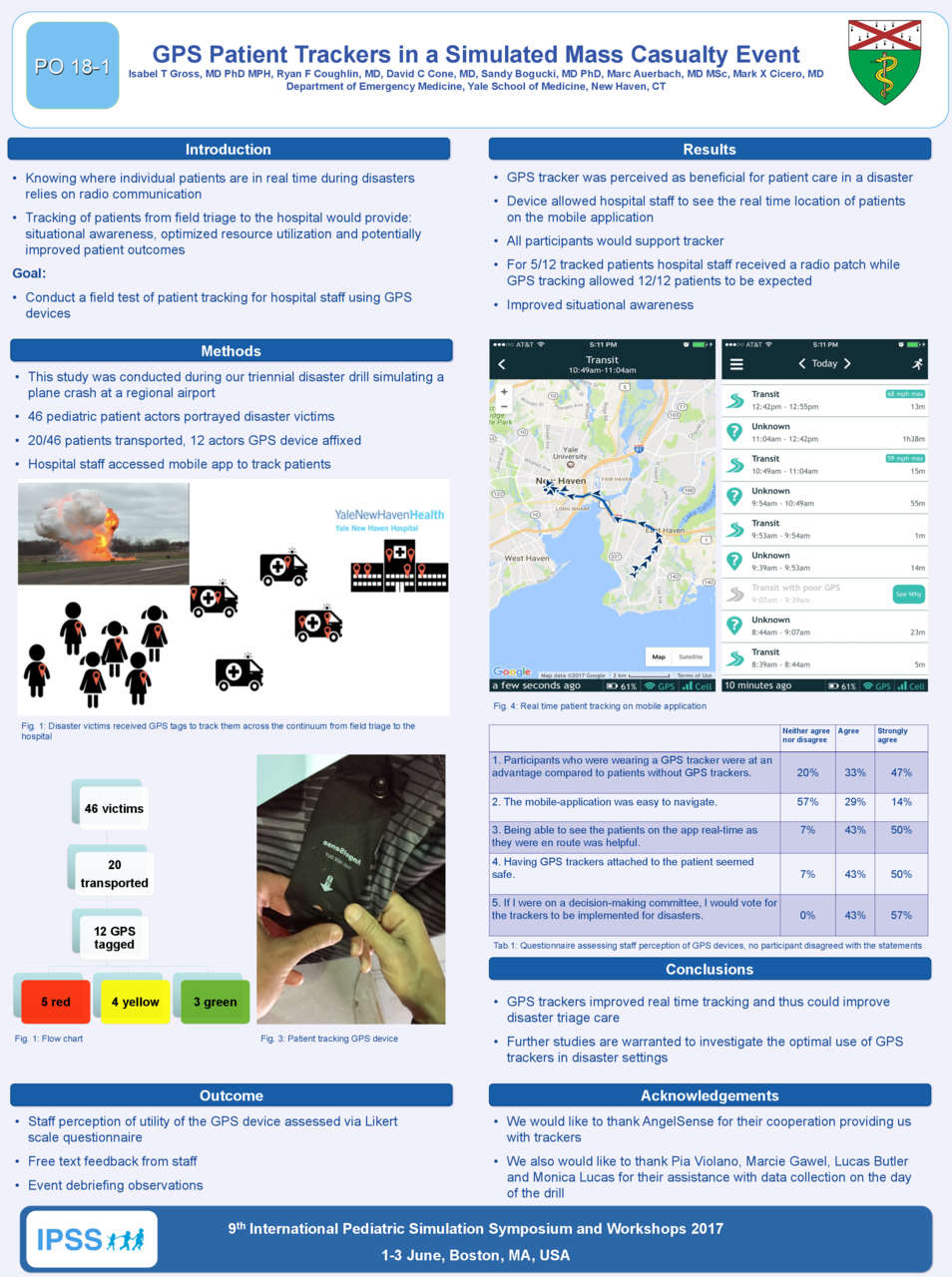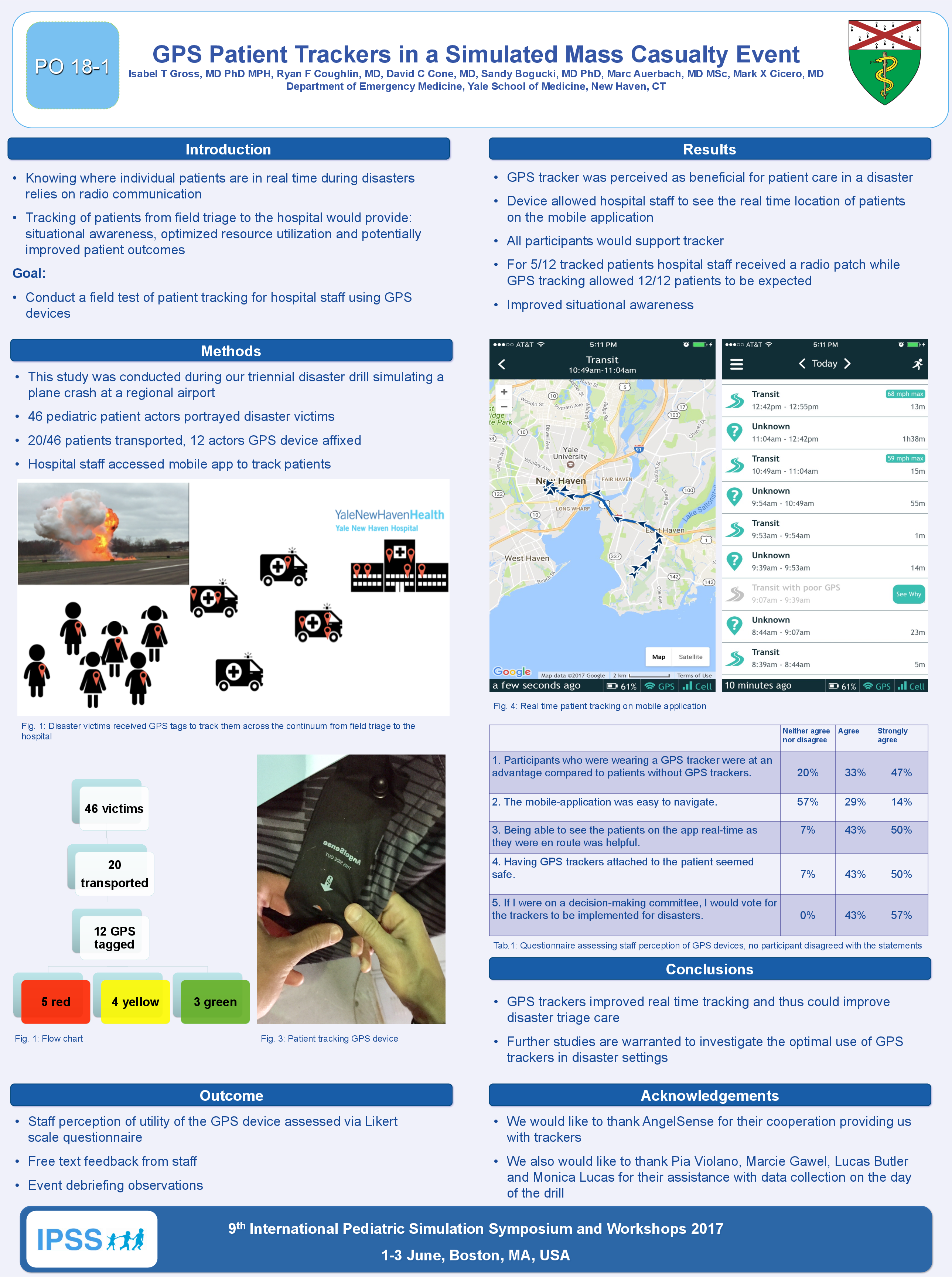Abstract
Introduction:
Knowing were individual patients are in real time during disasters relies on radio communication to an incident command. This information is not available to all providers and may be of poor quality. Tracking of patients across the continuum from field triage to EMS to hospital staff would provide situational awareness to all providers thus improving triage and treatment decisions.
The goal of this study was to facilitate patient tracking for emergency personnel, hospital staff, and the incident command center.
Methods:
This study was conducted during our annual disaster drill simulating a plane crash at a regional airport, in which 46 pediatric patient actors portrayed disaster victims. The study sites were Tweed Airport and Yale-New Haven Hospital Pediatric Emergency Department (YNHH PED) that are located 4.3 miles apart. Real ambulances, roads, modes of transport and emergency medical service providers were used. 20 of the 46 patients were transported to YNHH PED. Prior to the drill, GPS devices were affixed to 12 of the patient actors by the investigators (Figure 1). At YNHH PED, nurses, attendings, and fellows accessed a map through an application that provided real time geolocation of patients as they were transported from the scene to the hospital.. The outcome was staff perception of the utility of the GPS device assessed via Likert scale questionnaire, free text feedback from staff, as well as event debriefing observations.
Results:
The questionnaire about staff perception of the GPS tracker use was completed by 13 nurses, 2 Pediatric Emergency Medicine (PEM) attendings and 1 PEM fellow. Overall, the GPS tracker was perceived as an advantage for patient care. Staff reported that the device allowed them to see the real time location of the patients on the application and staff saw the GPS tracker as safe to use on pediatric patients. The most challenging part was the mobile application navigation (Figure 2). All participants would support tracker implementation if they were on a decision-making committee. Of the 12 patients with trackers, for 5/12 staff received a radio patch while for all 12 the GPS was noted to allow for real time tracking and improved situational awareness
Discussion:
GPS trackers could be helpful tools to improve estimated arrival time accuracy, avoid missed patient radio communication, and improve staff members’ situational awareness. The GPS trackers were well perceived and thought to be helpful. Moving forward to the next study phase, we are planning to use a more sensitive GPS device that may include an audible component for communication between EMS and ED staff providers during the continuum of care.
Conclusion:
GPS trackers improved real time tracking and thus could improve disaster triage care. Further studies are warranted after this initial feasibility pilot study to investigate the optimal use of GPS trackers in disaster settings.






